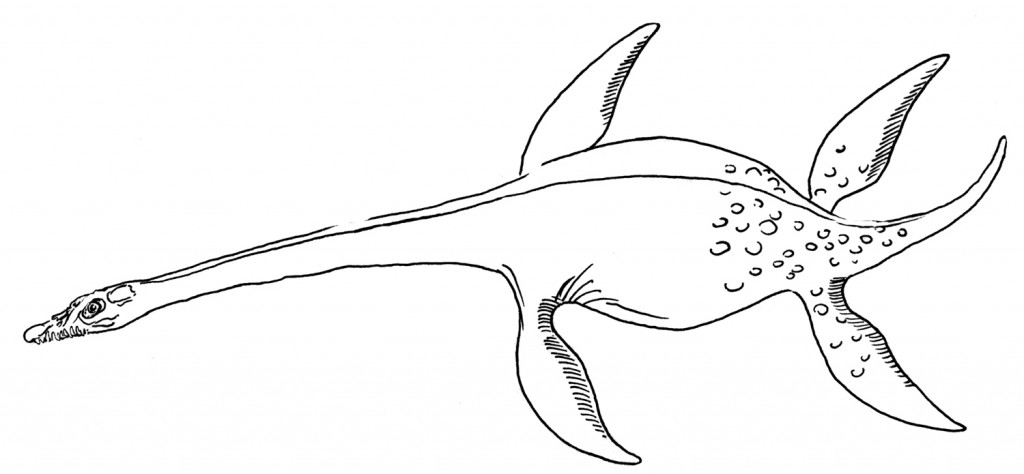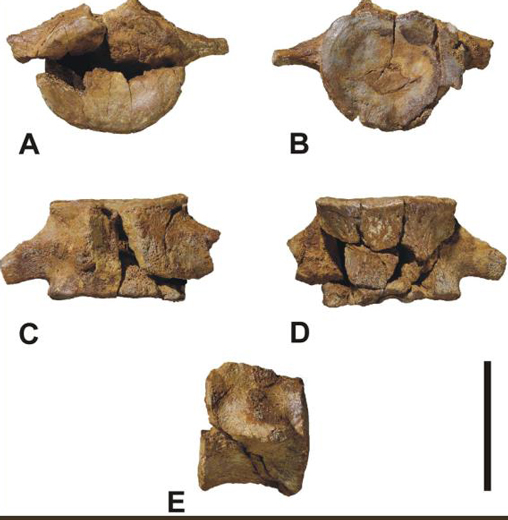Fossil Discovery Hints at Spanish Elasmosaurid
Recently printed in the academic journal “Cretaceous Research”, a trio of scientists have published details about a new plesiosaur specimen discovered in Late Cretaceous sediments in Guadalajara Province in central Spain. Plesiosaur specimens are exceptionally rare from the Late Cretaceous of Europe and although the fossil material is indistinct in terms of any autapomorphies (unique features), that would permit the establishment of a new species, the fragmentary fossils, including a single tail bone, represent an important discovery nonetheless.
An Illustration of a Typical Member of the Plesiosauridae
Picture credit: Everything Dinosaur
The picture (above) is based on a Collecta Prehistoric Life marine reptile model.
To view this range of models: CollectA Prehistoric Life Models and Figures.
The First Plesiosauria from Algora
The fossils consist of elements from a pelvic girdle and a caudal vertebra (tail bone). They are the first evidence of a plesiosaur in the coastal marine outcrops of Algora (Castilla-La-Mancha), Spain. It is one of only a handful of such specimens reported from the Cretaceous of Spain.
The Pelvic Girdle Fossil Bones with an Accompanying Line Drawing
Picture credit: N. Bardet, M. Segura and A. Pérez-García/Cretaceous Research
An Elasmosaurid
The fossils probably represent a single individual, as such, it is the only plesiosaur specimen from central Spain that is known from several bones. The researchers conclude that the material represents an indeterminate member of the Elasmosauridae. Elasmosaurids were a type of plesiosaur that had a wide geographical range during the Late Cretaceous and one that persisted to the end of the Maastrichtian faunal stage.
Views of the Caudal Vertebra (Indeterminate Elasmosaurid)
Picture credit: N. Bardet, M. Segura and A. Pérez-García/Cretaceous Research
The authors of the scientific paper include a researcher from the Natural History Museum of Paris (Muséum National d’Histoire Naturelle), as well as two researchers based in Spain. They suggest that the fossils represent an individual that either died further out to sea and was washed into a bay (thanatocoenosis), or the remains of an animal that lived in a near-shore environment (biocoenosis).
The scientific paper: “A Plesiosaur (Reptilia, Sauropterygia) from the Cenomanian (Late Cretaceous) of Algora (Guadalajara Province, Central Spain)” by N. Bardet, M. Segura and A. Pérez-García published in Cretaceous Research.
Visit the award-winning Everything Dinosaur website: Everything Dinosaur.









Leave A Comment